An Agent-Based Decision Support Framework for a Prospective Analysis of Transport and Heat Electrification in Urban Areas
Abstract
:1. Introduction
1.1. Context
1.2. Literature Review
- Integrated city-scale assessment of transport and building energy demand with a high spatial and temporal resolution;
- Spatiotemporal characterisation of energy requirements among energy users considering their behaviour related to plug-in electric vehicles (PEVs) and building heating technologies;
- Transparency and modularity in the design and implementation of the tool to allow its continuous development in a collaborative and participatory modelling environment.
2. Materials and Methods
2.1. Urban GIS
2.2. Synthetic Population Generator
2.3. Transport and Charging Model
2.4. Plug-In Electric Vehicle Model
2.5. Residential Energy Model
3. Results
3.1. Model Inputs and Assumptions
3.1.1. GIS City Model
3.1.2. PEV Ownership and Technology
3.1.3. PEV Charging Infrastructure
3.1.4. User Activities and PEV Charging Behaviour
3.1.5. Residential Energy Demand Parameters
3.2. Model Results
3.2.1. Travel and Charging Demand
3.2.2. Residential Energy Demand
4. Discussion and Other Case Studies
5. Conclusions
Author Contributions
Funding
Data Availability Statement
Conflicts of Interest
Abbreviations
| Acronym | Definition |
| ABM | Agent-based modelling |
| ABMS | Agent-based modelling and simulation |
| CO2-eq | Carbon dioxide equivalent |
| COP | Coefficient of performance |
| DSM | Demand-side management |
| EV | Electric vehicle |
| GIS | Geographic information system |
| HP | Heat pump |
| ONS | Office for National Statistics |
| PEV | Plug-in electric vehicle |
| PHEV | Plug-in hybrid electric vehicle |
| SOC | State of charge |
| ToU | Time of use |
References
- United Nations. World Urbanization Prospects 2018, Highlights; Department of Economic and Social Affairs, Population Division; United Nations: New York, NY, USA, 2019. [Google Scholar]
- International Energy Agency (IEA). Empowering Cities for a Net Zero Future: Unlocking Resilient, Smart, Sustainable Urban Energy Systems; International Energy Agency (IEA): Paris, France, 2021. [Google Scholar]
- Ripple, W.J.; Wolf, C.; Gregg, J.W.; Levin, K.; Rockström, J.; Newsome, T.M.; Betts, M.G.; Huq, S.; Law, B.E.; Kemp, L.; et al. World scientists’ warning of a climate emergency 2022. Bioscience 2022, 72, 894–898. [Google Scholar]
- Rising, J.; Tedesco, M.; Piontek, F.; Stainforth, D.A. The missing risks of climate change. Nature 2022, 610, 1149–1151. [Google Scholar]
- World Health Organization (WHO). Ambient (Outdoor) Air Pollution, Key Facts; World Health Organization (WHO): Geneva, Switzerland, 2018. Available online: https://www.who.int/news-room/fact-sheets/detail/ambient-(outdoor)-air-quality-and-health (accessed on 13 October 2021).
- World Health Organization (WHO). Ambient Air Pollution: A Global Assessment of Exposure and Burden of Disease; World Health Organization (WHO): Geneva, Switzerland, 2018.
- C40 & Arup. Climate Action in Megacities Version 2.0. 2014. Available online: https://www.arup.com/perspectives/publications/research/section/climate-action-in-megacities (accessed on 15 October 2021).
- International Energy Agency (IEA). Global Energy-Related CO2 Emissions by Sector; International Energy Agency (IEA): Paris, France, 2021; Available online: https://www.iea.org/data-and-statistics/charts/global-energy-related-co2-emissions-by-sector (accessed on 13 October 2021).
- Hawkins, T.R.; Gausen, O.M.; Strømman, A.H. Environmental impacts of hybrid and electric vehicles—A review. Int. J. Life Cycle Assess. 2012, 17, 997–1014. [Google Scholar]
- International Energy Agency (IEA). Global EV Outlook 2021; International Energy Agency (IEA): Paris, France, 2021. [Google Scholar]
- International Energy Agency (IEA). Tracking Clean Energy Progress 2017; International Energy Agency (IEA): Paris, France, 2017. [Google Scholar]
- Chaudry, M.; Abeysekera, M.; Hosseini, S.H.R.; Jenkins, N.; Wu, J. Uncertainties in decarbonising heat in the UK. Energy Policy 2015, 87, 623–640. [Google Scholar]
- Committee on Climate Change. Next Steps for UK Heat Policy; Committee on Climate Change: London, UK, 2016. [Google Scholar]
- Department of Energy and Climate Change. Heat Pumps in District Heating: Final Report; Department of Energy and Climate Change: London, UK, 2016. [Google Scholar]
- O’Dwyer, E.; Pan, I.; Acha, S.; Shah, N. Smart energy systems for sustainable smart cities: Current developments, trends and future directions. Appl. Energy 2019, 237, 581–597. [Google Scholar]
- Pohekar, S.D.; Ramachandran, M. Application of multi-criteria decision making to sustainable energy planning—A review. Renew. Sustain. Energy Rev. 2004, 8, 365–381. [Google Scholar]
- Wang, J.-J.; Jing, Y.-Y.; Zhang, C.-F.; Zhao, J.-H. Review on multi-criteria decision analysis aid in sustainable energy decision-making. Renew. Sustain. Energy Rev. 2009, 13, 2263–2278. [Google Scholar]
- García-Villalobos, J.; Zamora, I.; Knezović, K.; Marinelli, M. Multi-objective optimization control of plug-in electric vehicles in low voltage distribution networks. Appl. Energy 2016, 180, 155–168. [Google Scholar]
- Akmal, M.; Fox, B.; Morrow, J.D.; Littler, T. Impact of Heat Pump Load on Distribution Networks. IET Gener. Transm. Distrib. 2014, 8, 2065–2073. [Google Scholar]
- Siano, P. Demand response and smart grids—A survey. Renew. Sustain. Energy Rev. 2014, 30, 461–478. [Google Scholar]
- Strbac, G. Demand side management: Benefits and challenges. Energy Policy 2008, 36, 4419–4426. [Google Scholar]
- Lund, H.; Østergaard, P.A.; Connolly, D.; Mathiesen, B.V. Smart energy and smart energy systems. Energy 2017, 137, 556–565. [Google Scholar]
- Vayá, M.G.; Andersson, G. Centralized and decentralized approaches to smart charging of plug-in Vehicles. In Proceedings of the 2012 IEEE Power and Energy Society General Meeting, San Diego, CA, USA, 22–26 July 2012. [Google Scholar]
- García-Villalobos, J.; Zamora, I.; San Martín, J.; Asensio, F.; Aperribay, V. Plug-in electric vehicles in electric distribution networks: A review of smart charging approaches. Renew. Sustain. Energy Rev. 2014, 38, 717–731. [Google Scholar]
- Patteeuw, D.; Henze, G.P.; Helsen, L. Comparison of load shifting incentives for low-energy buildings with heat pumps to attain grid flexibility benefits. Appl. Energy 2016, 167, 80–92. [Google Scholar]
- Pfenninger, S.; Hawkes, A.; Keirstead, J. Energy systems modeling for twenty-first century energy challenges. Renew. Sustain. Energy Rev. 2014, 33, 74–86. [Google Scholar]
- Keirstead, J.; Jennings, M.; Sivakumar, A. A review of urban energy system models: Approaches, challenges and opportunities. Renew. Sustain. Energy Rev. 2012, 16, 3847–3866. [Google Scholar]
- Allegrini, J.; Orehounig, K.; Mavromatidis, G.; Ruesch, F.; Dorer, V.; Evins, R. A review of modelling approaches and tools for the simulation of district-scale energy systems. Renew. Sustain. Energy Rev. 2015, 52, 1391–1404. [Google Scholar]
- Wei, S.; Jones, R.; De Wilde, P. Driving factors for occupant-controlled space heating in residential buildings. Energy Build. 2014, 70, 36–44. [Google Scholar]
- Daina, N.; Sivakumar, A.; Polak, J.W. Modelling electric vehicles use: A survey on the methods. Renew. Sustain. Energy Rev. 2017, 68, 447–460. [Google Scholar]
- Azadfar, E.; Sreeram, V.; Harries, D. The investigation of the major factors influencing plug-in electric vehicle driving patterns and charging behaviour. Renew. Sustain. Energy Rev. 2015, 42, 1065–1076. [Google Scholar]
- Li, W.; Stanula, P.; Egede, P.; Kara, S.; Herrmann, C. Determining the main factors influencing the energy consumption of electric vehicles in the usage phase. Procedia CIRP 2016, 48, 352–357. [Google Scholar]
- Sola, A.; Corchero, C.; Salom, J.; Sanmarti, M. Multi-domain urban-scale energy modelling tools: A review. Sustain. Cities Soc. 2020, 54, 101872. [Google Scholar]
- Robinson, D.; Haldi, F.; Leroux, P.; Perez, D.; Rasheed, A.; Wilke, U. CitySim: Comprehensive micro-simulation of resource flows for sustainable urban planning. In Proceedings of the 11th International IBPSA Conference, Glasgow, Scotland, 27–30 July 2009; pp. 1083–1090. [Google Scholar]
- Bergerson, J.; Muehleisen, R.T.; Rodda, W.B.; Auld, J.A.; Guzowski, L.B.; Ozik, J.; Collier, N. Designing future cities: LakeSIM integrated design tool for assessing short and long term impacts of urban scale conceptual designs. ISOCARP Rev. 2015, 11. [Google Scholar]
- Chingcuanco, F.; Miller, E.J. A microsimulation model of urban energy use: Modelling residential space heating demand in ILUTE. Comput. Environ. Urban Syst. 2012, 36, 186–194. [Google Scholar] [CrossRef]
- Keirstead, J.; Samsatli, N.I.; Shah, N. SynCity: An Integrated Tool Kit for Urban Energy Systems Modeling. In Energy efficient cities: Assessment Tools and Benchmarking Practices; World Bank Publication: Washington, DC, USA, 2009. [Google Scholar]
- Ghauche, A. Integrated Transportation and Energy Activity-Based Model. Master’s Thesis, Massachusetts Institute of Technology, Cambridge, MA, USA, 2010. [Google Scholar]
- Bustos-Turu, G. Integrated modelling framework for the analysis of demand side management strategies in urban energy systems. Ph.D. Thesis, Imperial College London, London, UK, 2018. [Google Scholar]
- Macal, C.M. Everything you need to know about agent-based modelling and simulation. J. Simul. 2016, 10, 144–156. [Google Scholar]
- Van Dam, K.H.; Nikolic, I.; Lukszo, Z. Agent-Based Modelling of Socio-Technical Systems; Springer Science & Business Media: Dordrecth, The Netherlands, 2012. [Google Scholar]
- North, M.J.; Collier, N.T.; Ozik, J.; Tatara, E.R.; Macal, C.M.; Bragen, M.; Sydelko, P. Complex adaptive systems modeling with Repast Simphony. Complex Adapt. Syst. Model. 2013, 1, 1–26. [Google Scholar]
- Malleson, N. Repastcity. 2012. Available online: https://github.com/nickmalleson/repastcity (accessed on 1 April 2017).
- Van Dam, K.; Bustos-Turu, G. SmartCityModel, GitHub Repository [Online]. 2016. Available online: https://github.com/albertopolis/SmartCityModel (accessed on 1 May 2022).
- Van Dam, K.H.; Bustos-Turu, G.; Shah, N. A methodology for simulating synthetic populations for the analysis of socio-technical infrastructures. In Proceedings of the 11th Conference of the European Social Simulation Association (ESSA), Groningen, The Netherlands, 14–18 September 2015. [Google Scholar]
- Adenaw, L.; Lienkamp, M. Multi-Criteria, Co-Evolutionary Charging Behavior: An Agent-Based Simulation of Urban Electromobility. World Electr. Veh. J. 2021, 12, 18. [Google Scholar] [CrossRef]
- Caneta Research Inc. Heat Pump Characterization Study; Caneta Research Inc.: Mississauga, ON, Canada, 2010. [Google Scholar]
- Bustos-Turu, G.; van Dam, K.H.; Acha, S.; Markides, C.N.; and Shah, N. Simulating residential electricity and heat demand in urban areas using an agent-based modelling approach. In Proceedings of the 2016 IEEE International Energy Conference (ENERGYCON), Leuven, Belgium, 4–8 April 2016; pp. 1–6. [Google Scholar] [CrossRef]
- Office for National Statistics (ONS). 2016. Available online: https://www.ons.gov.uk/census (accessed on 1 February 2016).
- Ordnance Survey. 2016. Available online: https://www.ordnancesurvey.co.uk/ (accessed on 1 February 2016).
- Mayor of London. Average Floor Area by Borough. 2015. Available online: https://data.london.gov.uk/average-floor-area-by-borough/ (accessed on 1 February 2016).
- Bustos-Turu, G. Operational Impacts of the Charging Infrastructure in the Electric Vehicle Spatial and Temporal Energy Demand and Grid Services Provision: An Agent-Based Modelling and Simulation Approach. Master’s Thesis, Sustainable Energy Futures, Imperial College London, London, UK, 2013. [Google Scholar]
- Pasaoglu, G.; Fiorello, D.; Martino, A.; Scarcella, G.; Alemanno, A.; Zubaryeva, A.; Thiel, C. Driving and Parking Patterns of European Car Drivers—A Mobility Survey; European Commission, Joint Research Centre, Institute for Energy and Transport: European Union: Brussels, Belgium, 2012. [Google Scholar]
- Zap-Map 2020, Zap-Map EV Charging Survey, Key Findings 2020. Available online: https://www.zap-map.com/ev-charging-survey/ (accessed on 27 September 2021).
- Zap-Map 2021, EV Charging Stats 2021. Available online: https://www.zap-map.com/statistics/ (accessed on 17 September 2021).
- Department for Transport (DfT) and Driver and Vehicle Licensing Agency (DVLA). Vehicle Licensing Statistics. 2021. Available online: https://www.gov.uk/government/statistical-data-sets/all-vehicles-veh01 (accessed on 17 September 2021).
- Elexon. Profiling. 2015. Available online: https://www.elexon.co.uk/reference/technical-operations/profiling/ (accessed on 1 February 2016).
- Palmer, J.; Cooper, I. United Kingdom Housing Energy Fact File: 2013; Department of Energy & Climate Change (DECC): London, UK, 2014. [Google Scholar]
- Met Office. Met Office Integrated Data Archive System (MIDAS) Land and Marine Surface Stations Data (1853-current). 2016. Available online: http://catalogue.ceda.ac.uk/uuid/220a65615218d5c9cc9e4785a3234bd0 (accessed on 1 February 2016).
- Pearre, N.S.; Kempton, W.; Guensler, R.L.; Elango, V.V. Electric vehicles: How much range is required for a day’s driving? Transp. Res. Part C Emerg. Technol. 2011, 19, 1171–1184. [Google Scholar]
- Lin, Z.; Dong, J.; Liu, C.; Greene, D. Estimation of Energy Use by Plug-In Hybrid Electric Vehicles. Transp. Res. Rec. J. Transp. Res. Board 2012, 2287, 37–43. [Google Scholar]
- Department for Transport (DfT). National Travel Survey Statistics. 2020. Available online: https://www.gov.uk/government/collections/national-travel-survey-statistics (accessed on 20 September 2021).
- Transport for London (TfL). London Travel Demand Survey—Workbook 2019/2020. 2021. Available online: https://tfl.gov.uk/corporate/about-tfl/how-we-work/planning-for-the-future/consultations-and-surveys (accessed on 20 September 2021).
- Bates, J.; Leibling, D. Spaced Out: Perspectives on Parking Policy; RAC Foundation: London, UK, 2012. [Google Scholar]
- Yang, L.; Zhang, L.; Stettler, M.E.; Sukitpaneenit, M.; Xiao, D.; van Dam, K.H. Supporting an integrated transportation infrastructure and public space design: A coupled simulation method for evaluating traffic pollution and microclimate. Sustain. Cities Soc. 2020, 5, 101796. [Google Scholar]
- Chakrabarti, A.; Proeglhoef, R.; Bustos-Turu, G.; Lambert, R.; Mariaud, A.; Acha, S.; Markides, C.N.; Shah, N. Optimisation and analysis of system integration between electric vehicles and UK decentralised energy schemes. Energy 2019, 176, 805–815. [Google Scholar] [CrossRef]
- Lowans, C. Integrated Planning of Electric Taxi Charging Infrastructure. Master’s Thesis, Sustainable Energy Futures, Imperial College London, London, UK, 2017. [Google Scholar]
- Ladas, P. Simulating Heat and Electricity Demand in Urban Areas an Agent-Based Modelling Approach in Residential and Non-Residential Buildings. Master’s Thesis, Sustainable Energy Futures, Imperial College London, London, UK, 2016. [Google Scholar]
- Briola, M. Agent-Based Modelling of Residential Heat Demand in a District Heating Network: A Decision Support Tool for Queen Elizabeth Olympic Park Case Study. Master’s Thesis, Sustainable Energy Futures, Imperial College London, London, UK, 2016. [Google Scholar]
- Xin, W. Simulation and Characterisation of Charging Infrastructure of ULEV Taxis in London. Master’s Thesis, Sustainable Energy Futures, Imperial College London, London, UK, 2016. [Google Scholar]
- Clifford, M. Decision Support for the Evaluation of Sustainable Urban Masterplans. Master’s Thesis, Sustainable Energy Futures, Imperial College London, London, UK, 2015. [Google Scholar]
- Ferard, M. Sustainable Energy Systems in Islands and Cities: Potential for Mutual Learning. Master’s Thesis, Sustainable Energy Futures, Imperial College London, London, UK, 2015. [Google Scholar]
- Plessiez, P. Mitigating the Impacts of Electric Vehicles on the Electricity Network through the Use of Smart Charging Strategies. Master’s Thesis, Sustainable Energy Futures, Imperial College London, London, UK, 2015. [Google Scholar]
- Mallet, E. Attractiveness to Customers and Profitability of Smart Charging Schemes for Electric Vehicles. Master’s thesis, Sustainable Energy Futures, Imperial College London, London, UK, 2015. [Google Scholar]
- Bustos-Turu, G.; Van Dam, K.; Acha, S.; Shah, N. Estimating Plug-in Electric Vehicle Demand Flexibility through an Agent-Based Simulation Model. In Proceedings of the 5th IEEE PES Innovative Smart Grid Technologies (ISGT) European 2014 Conference, Istanbul, Turkey, 12–15 October 2014. [Google Scholar]
- Acha, S.; Van Dam, K.H.; Keirstead, J.; Shah, N. Integrated Modelling of Agent-Based Electric Vehicles into Optimal Power Flow Studies. In Proceedings of the 21st International Conference on Electricity Distribution, Frankfurt, Germany, 6–9 June 2011. [Google Scholar]

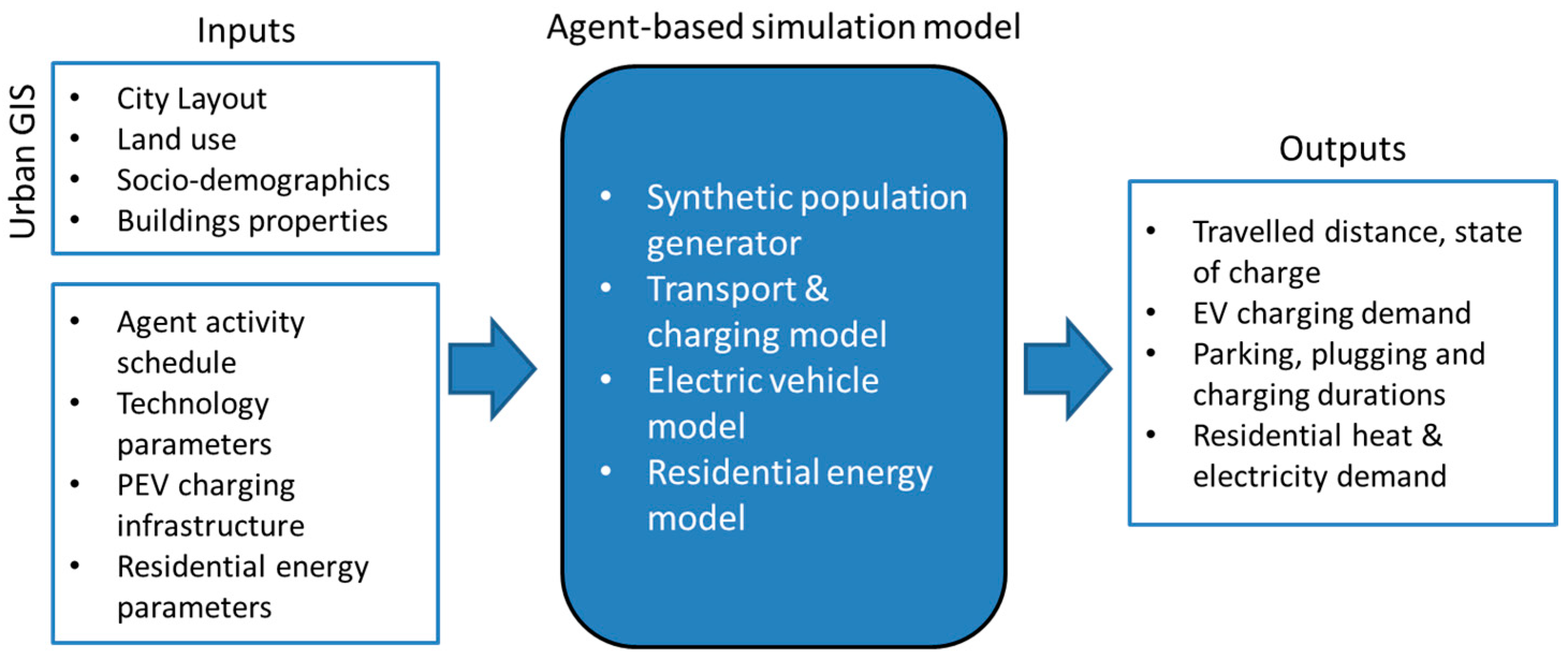


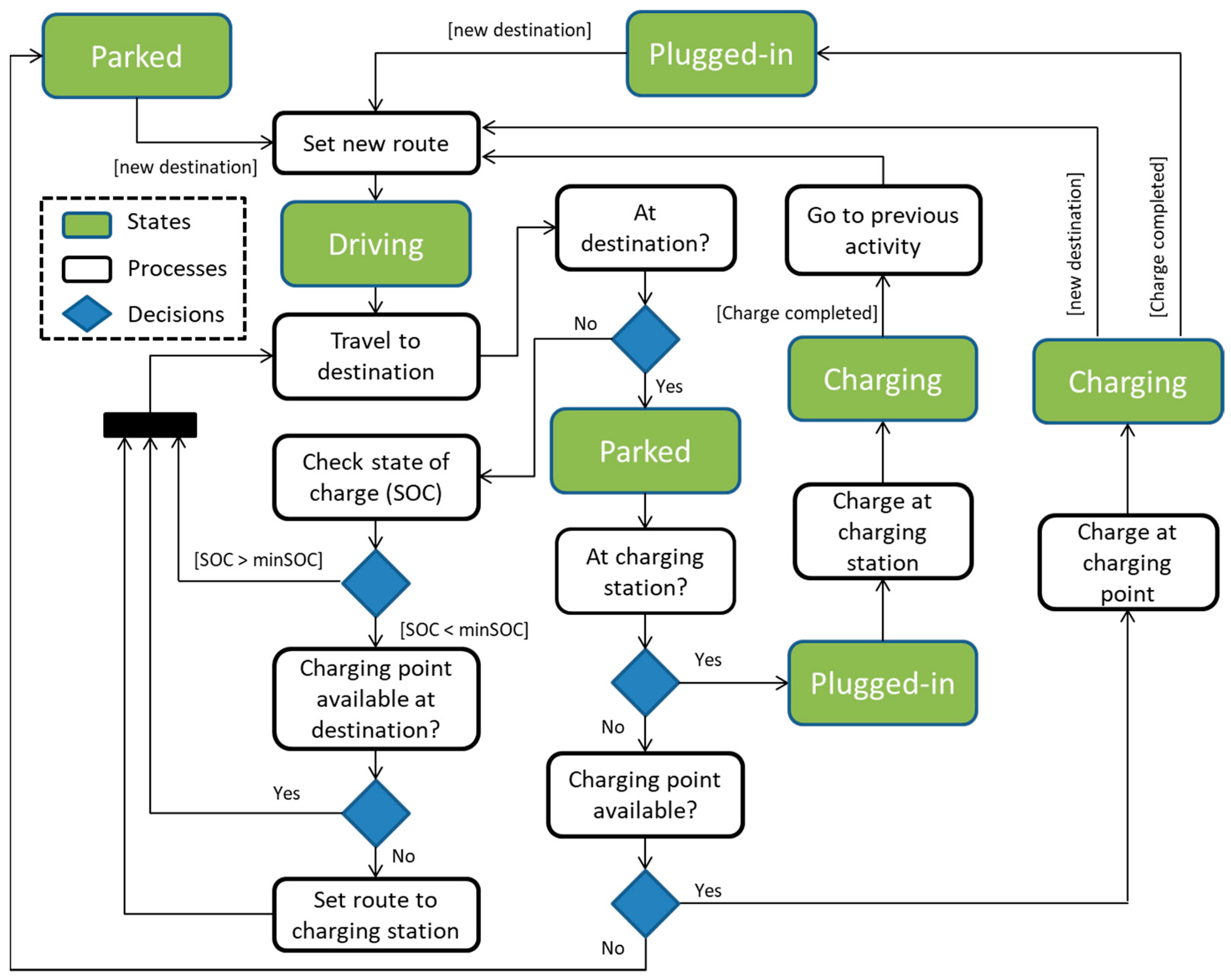
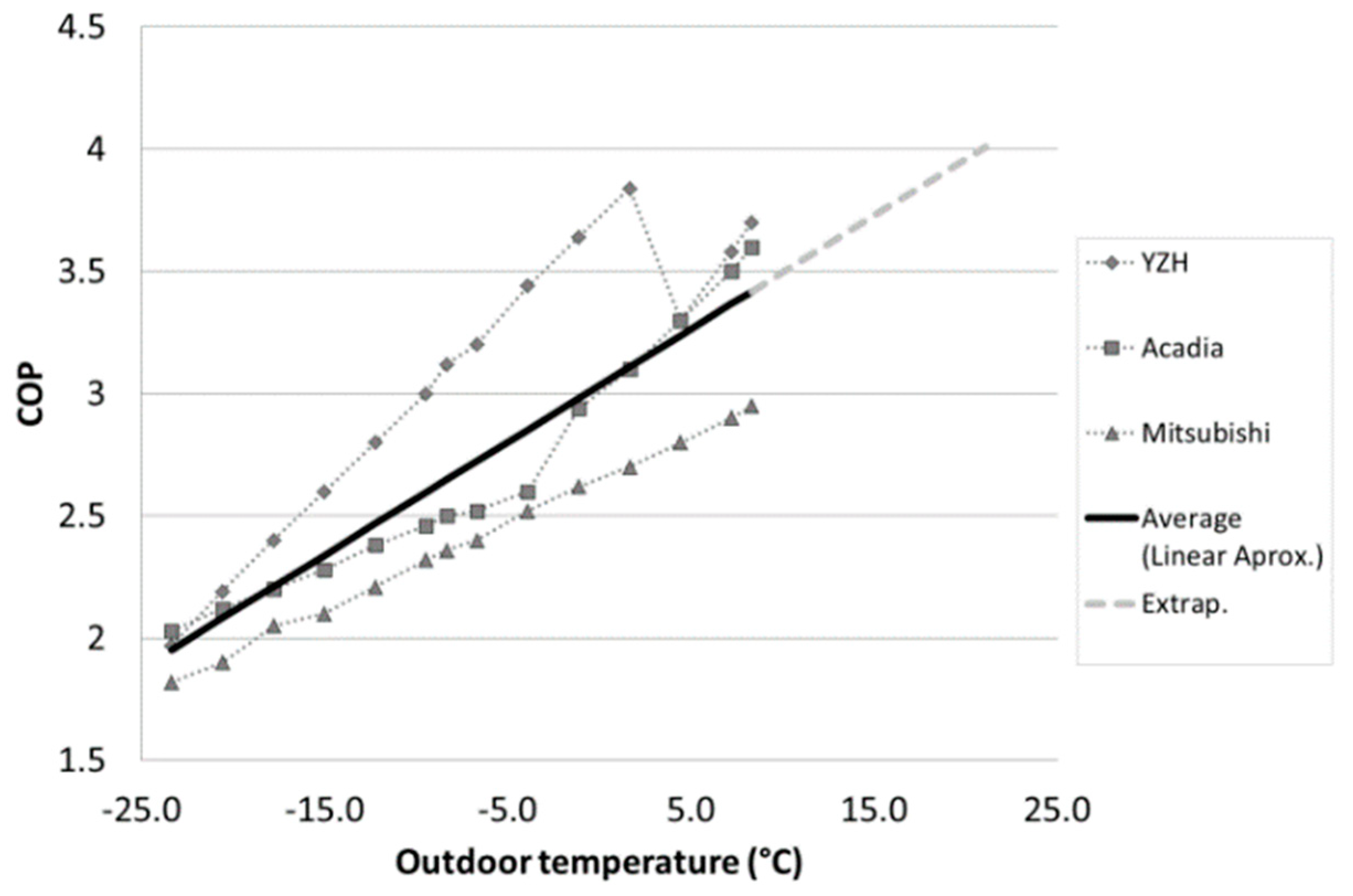
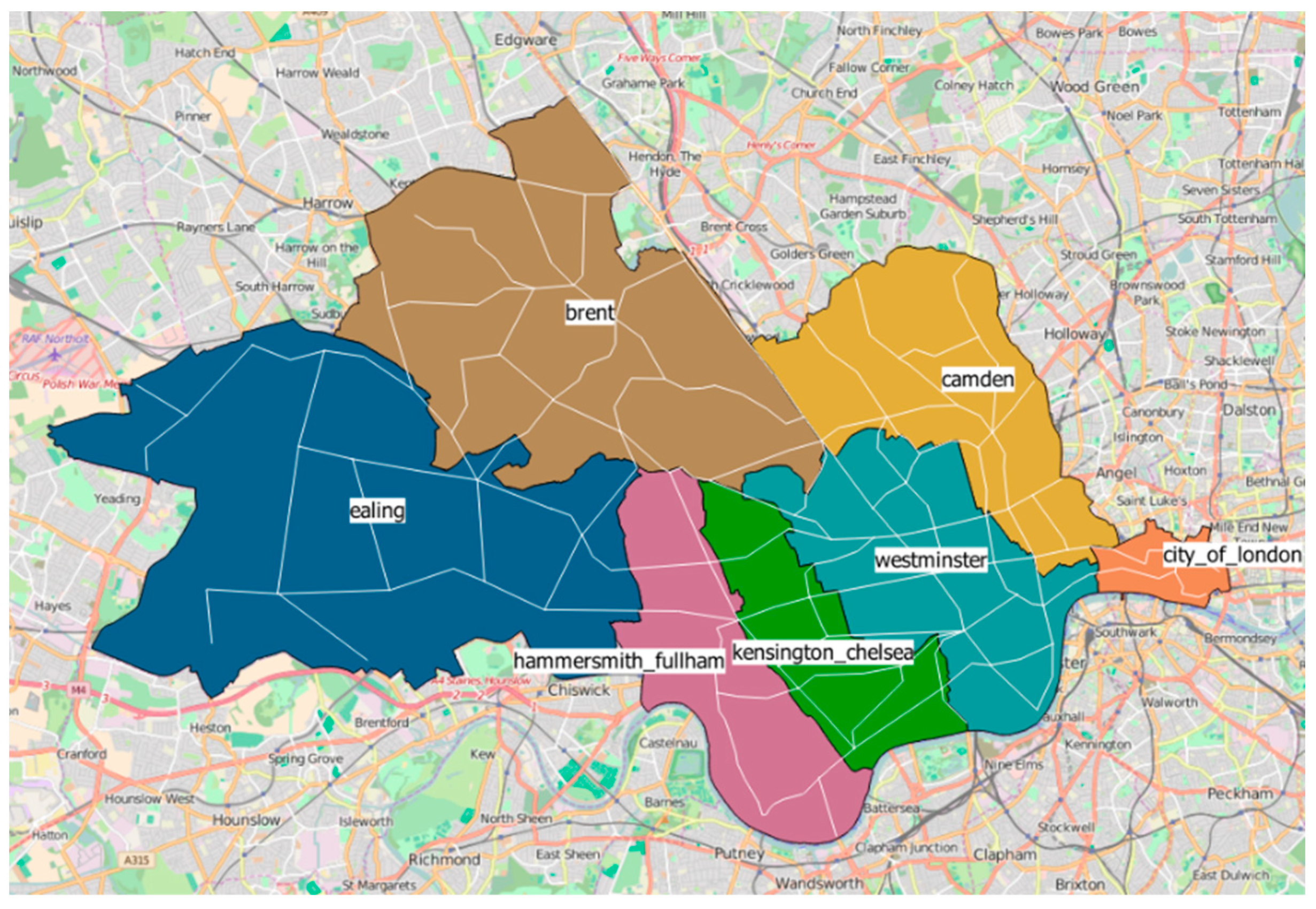
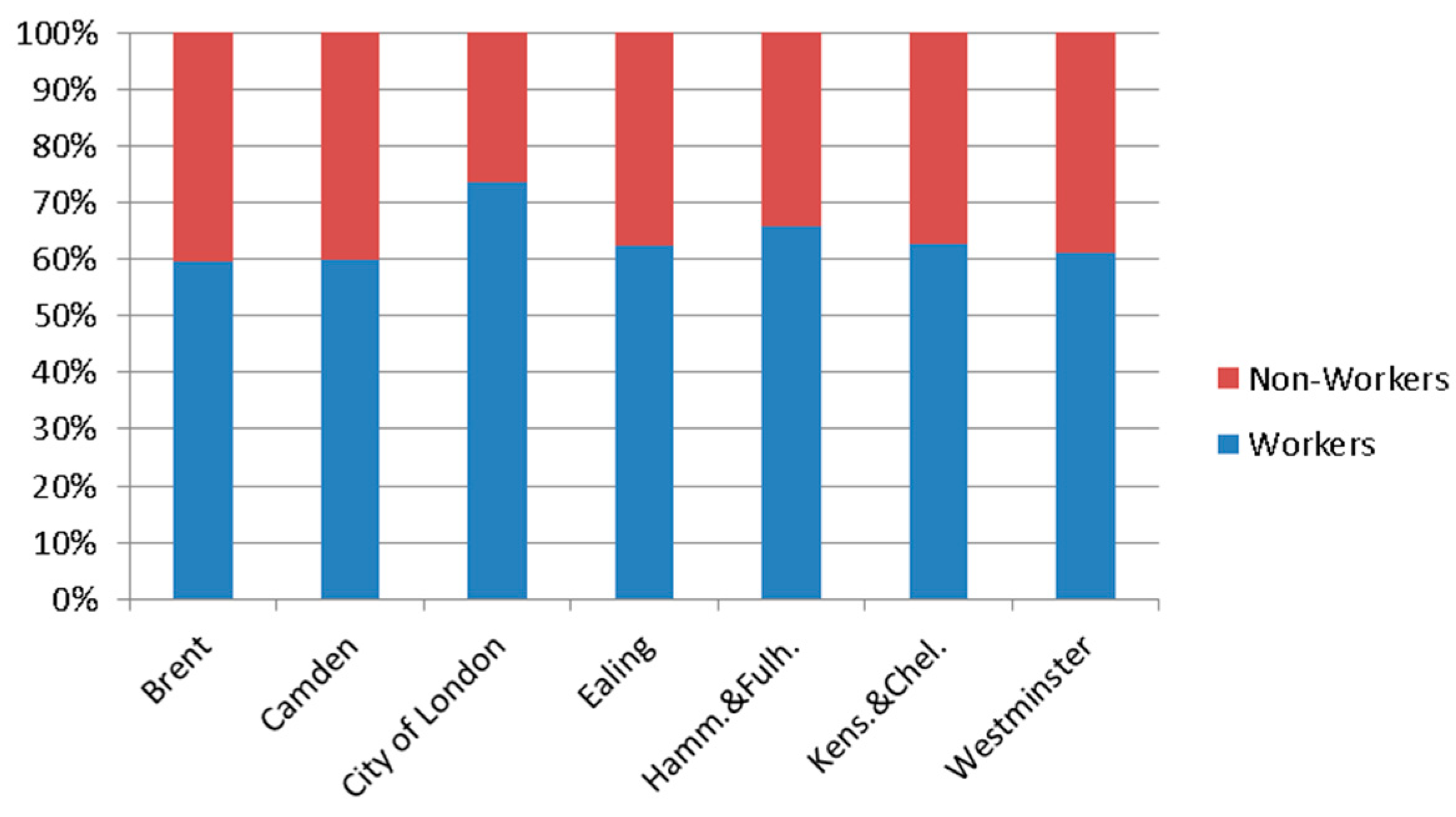
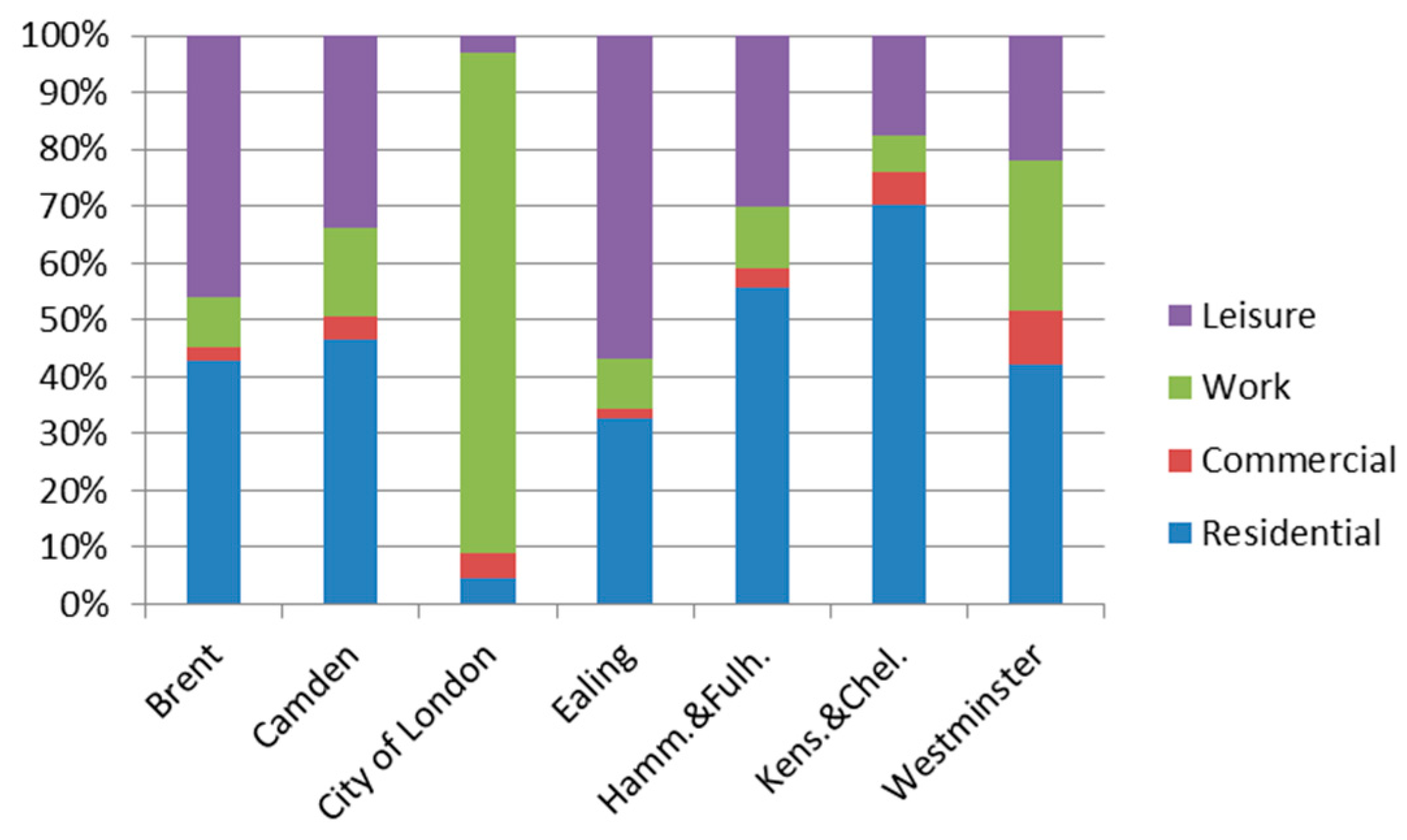
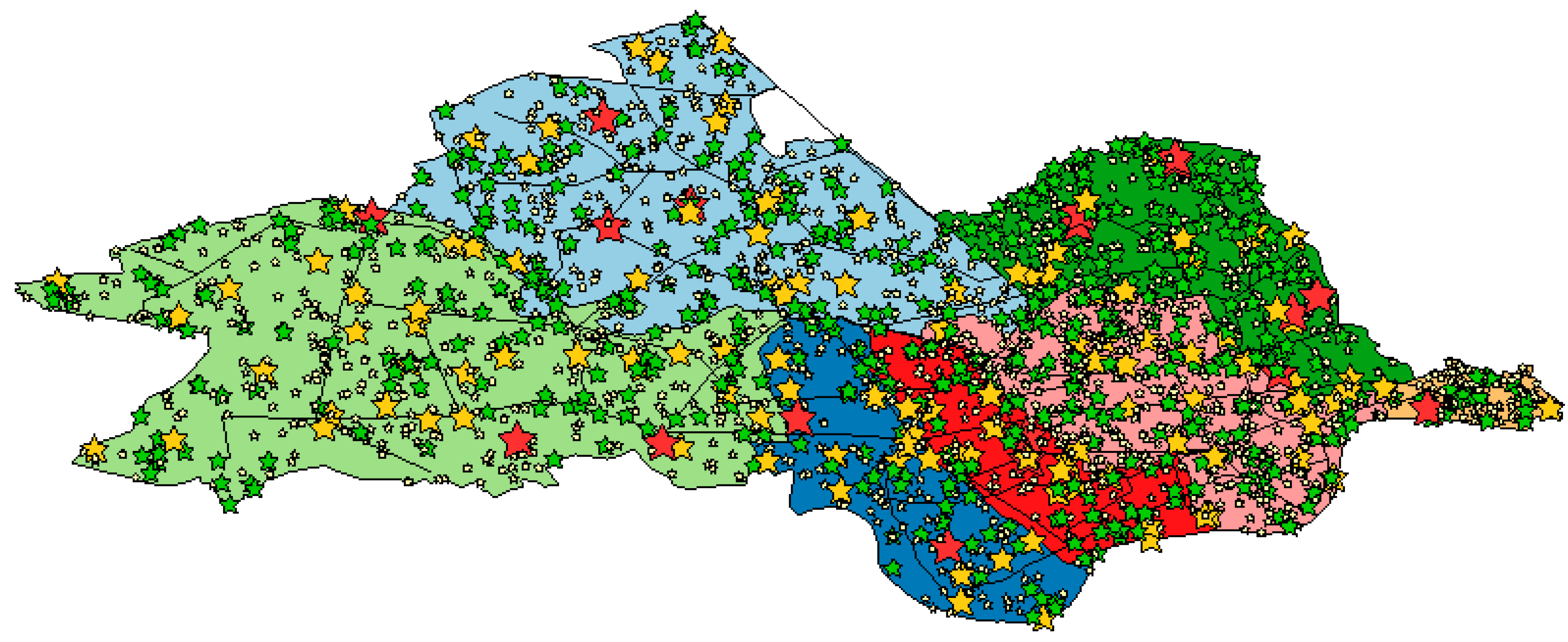
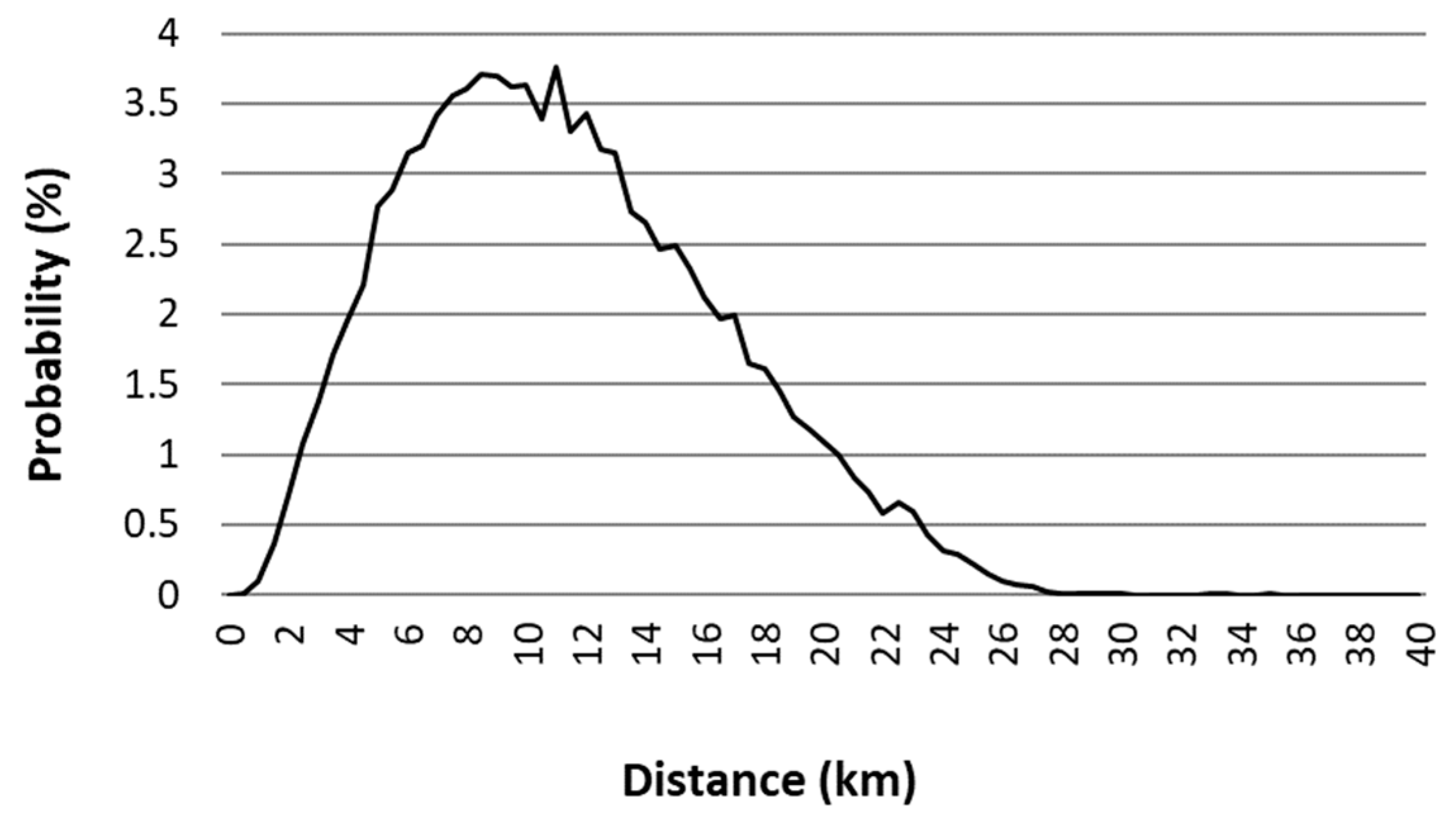

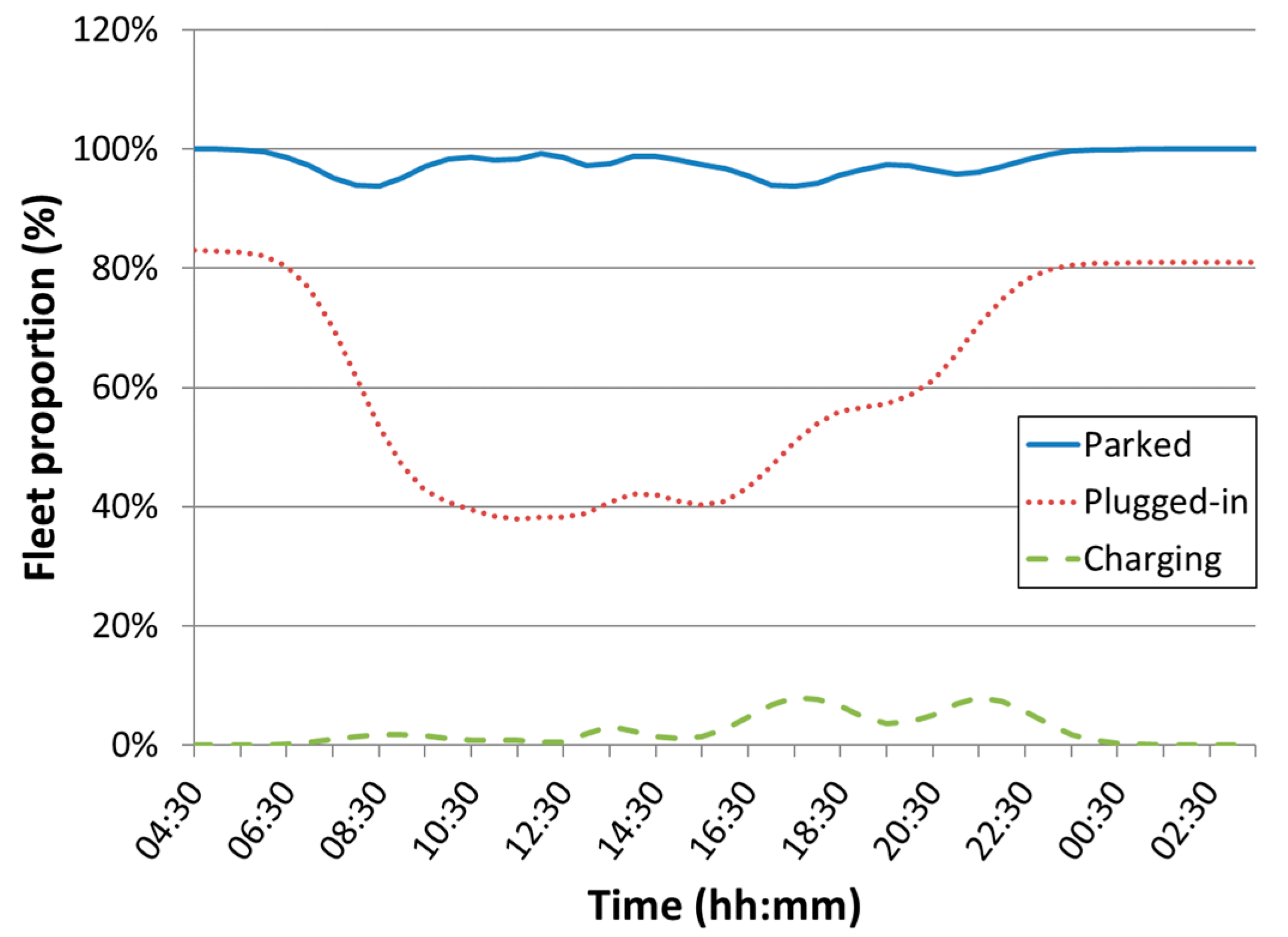
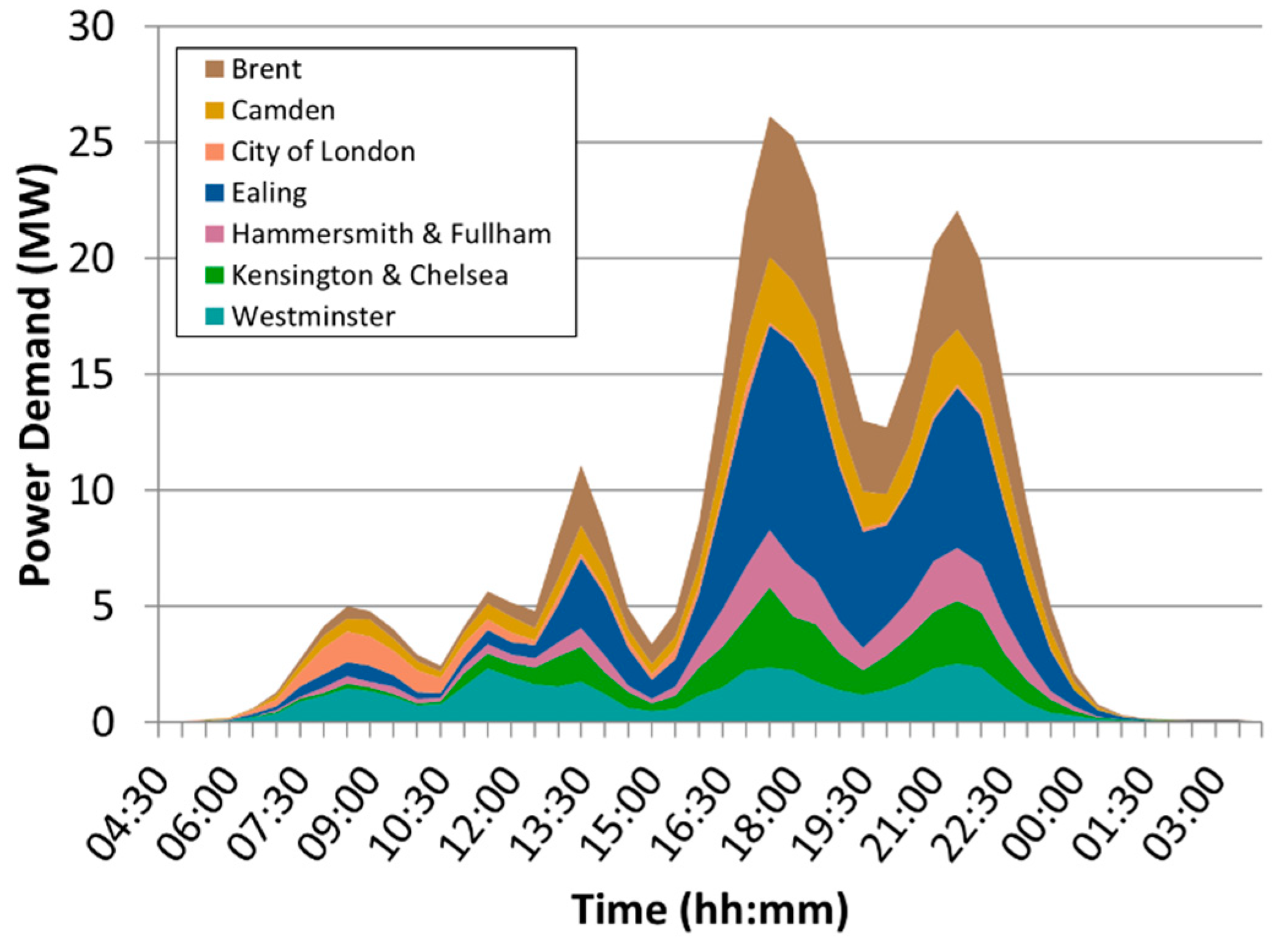

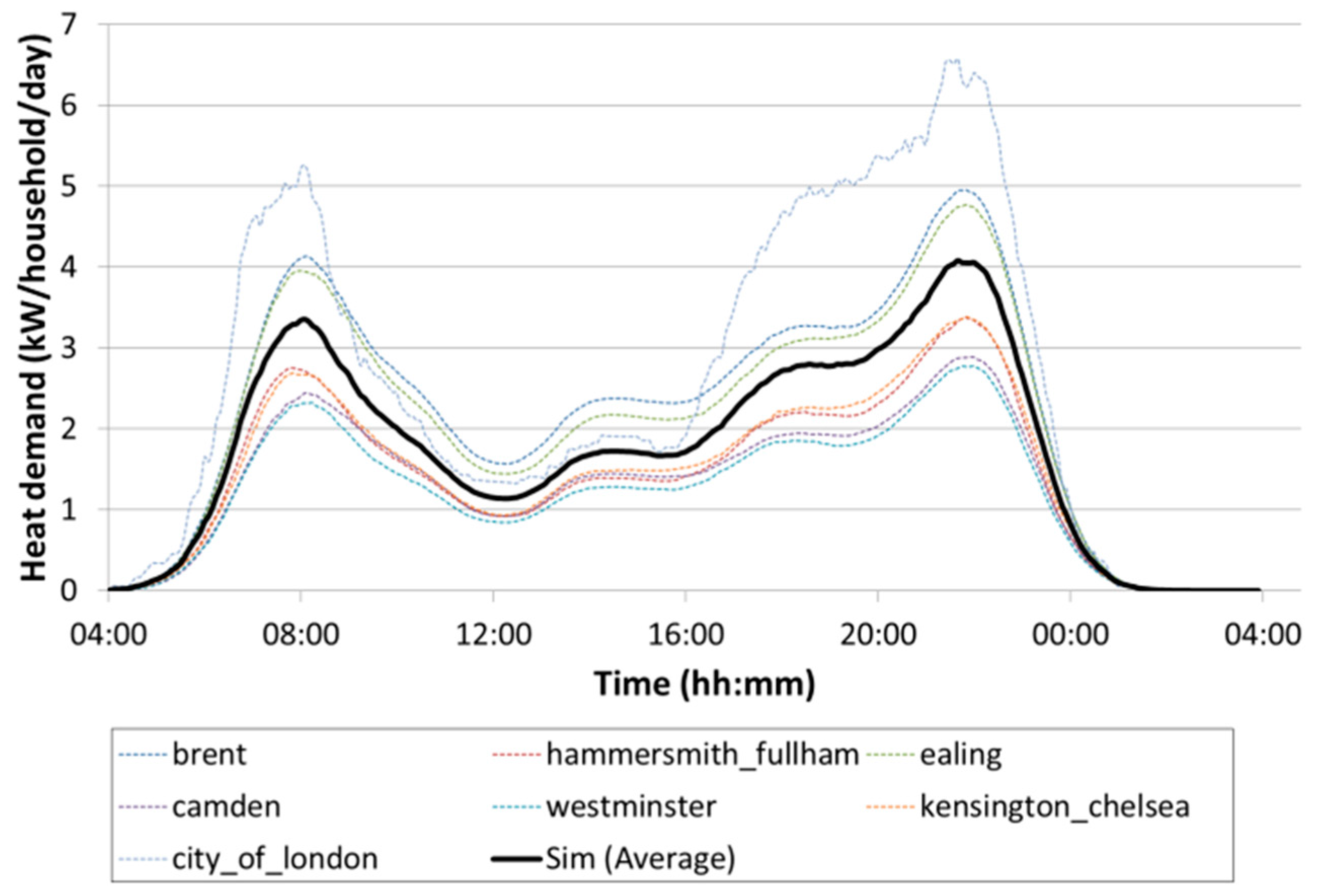


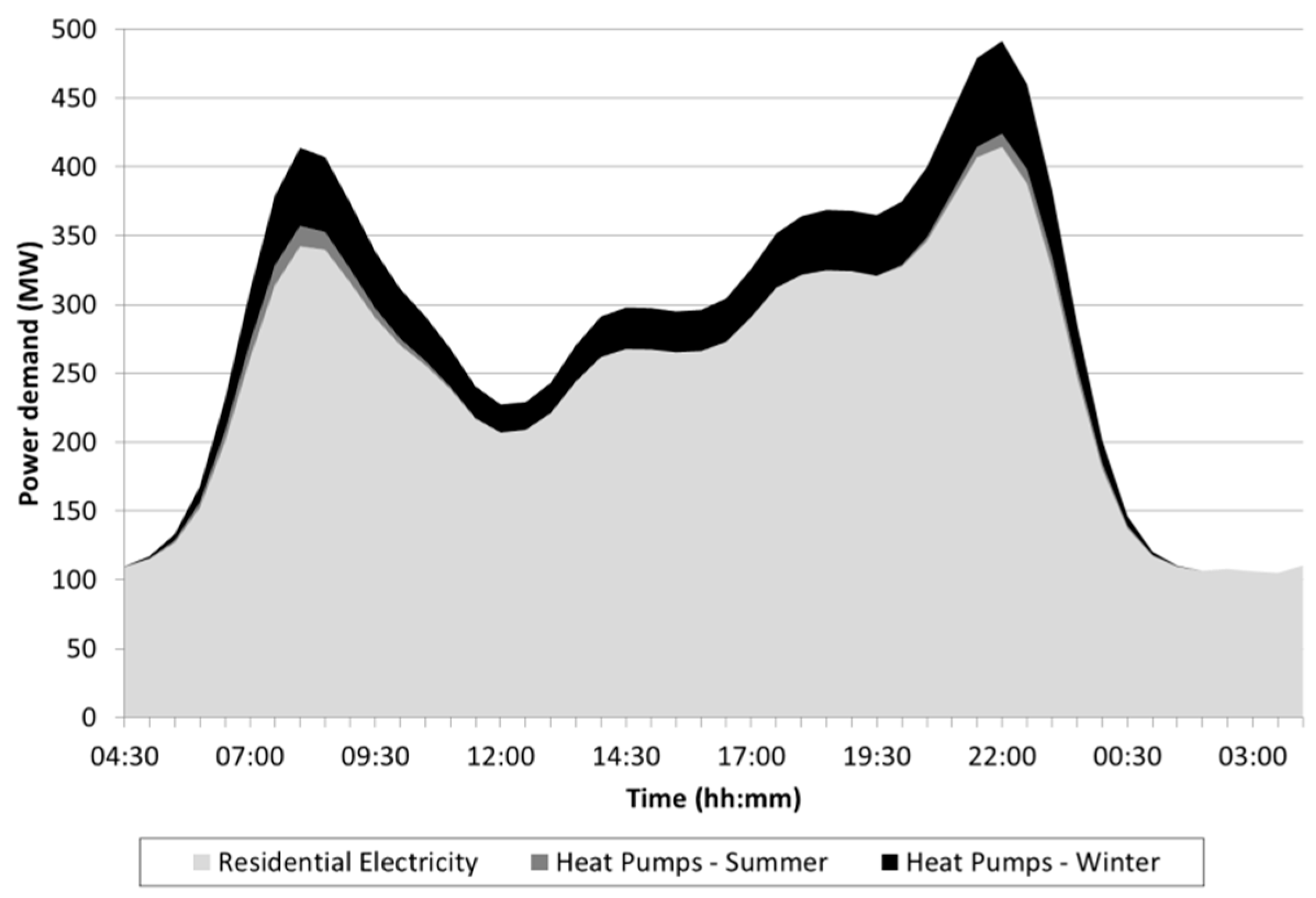
| Land Use Type | ONS Categories |
|---|---|
| Residential | Residential |
| Commercial | Retail Premises |
| Work | Offices, Commercial Offices, “Other” Offices, Factories, Warehouses |
| Leisure | Green Space *, Other Bulk Premises |
| Segment | Battery Capacity [kWh] | Battery Consumption [Wh/km] | Electrical Range [km] | Market Share [%] |
|---|---|---|---|---|
| A-Mini | 15 | 135 | 115 | 4 |
| B-Small | 23 | 148 | 155 | 47 |
| C-Medium | 14 | 169 | 83 | 49 |
| Worker | Non-Worker |
|---|---|
| (wake-up, 7.0, 1.0, 1.0) | (wake-up, 8.0, 1.0, 1.0) |
| (work, 8.0, 1.0, 1.0) | (work, 9.0, 1.0, 0.1) |
| (shopping, 13.0, 0.5, 0.1) | (shopping, 11.0, 0.5, 0.3) |
| (work, 15.0, 0.5, 1) | (home, 13.0, 0.5, 0.7) |
| (home, 17.0, 1.0, 0.7) | (work, 14.0, 1.0, 0.1) |
| (leisure, 18.0, 1.0, 0.3) | (leisure, 17.0, 1.5, 0.5) |
| (home, 21.0, 1.0, 1.0) | (home, 21.0, 1.5, 1.0) |
| (sleep, 23.0, 1.0, 1.0) | (sleep, 24.0, 1.0, 1.0) |
| Parameter | Value |
|---|---|
| 30% | |
| 80% | |
| (with charging unit at home) | 100% |
| (without charging unit at home) | 60% |
| Parameter | Value | Units |
|---|---|---|
| 0.2 | kW | |
| 0.92 | kW |
| Parameter | England (All Modes, Source: [62]) | London (All Modes, Source: [63]) | Simulation |
|---|---|---|---|
| Trips per vehicle per day | 2.61 | 2.21 | 2.32 |
| Average distance per trip (km) | 10.98 | 5.93 | 11.02 |
| Distance travelled per day (km) | 28.66 | 13.11 | 25.62 |
| # | Reference | Model Purpose | Number of Agents | Agent Types | Spatial Scale | Temporal Scale | Extensions/Changes to Main Model |
|---|---|---|---|---|---|---|---|
| 1 | Yang et al., 2020 [65] | Assessment of transport infrastructure and public space scenarios | 80% of total motor vehicles | Car drivers | Haidian District, Beijing, China | 24 h | New quickest path algorithm for route choice model |
| 2 | Chakrabarti et al., 2019 [66] | Financial assessment of electric vehicle integration in decentralised energy schemes | 10% and 30% of vehicle fleets | Residential and commercial EV users | Urban area centred in Islington borough, London | 24 h | New commercial vehicle agent. Use of EV charging demand as part of the operation strategy of the District Heating Network. |
| 3 | Lowans, 2017 [67] | Performance assessment of the PHEV taxi charging network | 4200 | PHEV taxi drivers | Greater London | 24 h | New PHEV taxi agents. New network of charging points |
| 4 | Ladas, 2016 [68] | Simulate energy demand in urban areas | 9828 | Residents | Isle of Dogs area, London, MSOA as spatial unit | 24 h, 5 min time step | More details on building energy demand model. New energy demand model for non-residential buildings |
| 5 | Briola, 2016 [69] | Analyse the operational performance of district heat networks | 647 | Residents | Queen Elizabeth Olympic Park area, London | 24 h, 5 min time step | New heat exchange from/to the district heat network |
| 6 | Xin, 2016 [70] | Simulate the performance of EV taxi charging infrastructure | 1400 | EV taxi drivers | Central London area + nearby airports | 24 h | New EV taxi agents, new charging network performance indicators |
| 7 | Bustos-Turu et al., 2016 [48] | Estimate electricity and heat demand in urban areas | 38,342 | PEV users | London area (Central West) | 24 h | Comparison between simulated and published annual energy consumption at the borough level |
| 8 | Clifford, 2015 [71] | Evaluate energy sustainability of urban masterplans | 2131 (5% pop.) | Residents | Old Oak Common, London. Buildings as spatial units | 24 h, 5 min time step | Extensions to the residential heat demand model, a simplified district heat network model, and new sustainability indicators |
| 9 | Ferard, 2015 [72] | Evaluate DR mechanisms in different geographical areas | 100 | Residents | Reunion Island and London | 24 h | New shiftable electricity demand model, electricity supply model, and geographical constraints in the O-D model |
| 10 | Plessiez, 2015 [73] | Compare different smart charging algorithms in reducing the impacts on the LV network | 1% EV adoption | Private PEV users | London district area | 24 h, 10 min step | Output file processing tools for integration with the power flow model and smart charging strategies |
| 11 | Mallet, 2015 [74] | Economic analyses of different charging management strategies based on ToU tariffs | 500 | Private PEV users | London district area | 1 week | A new aggregator agent to control PEV charging |
| 12 | Bustos-Turu, 2013 [52], Bustos-Turu et al., 2014 [75] | Explore the impact of charging infrastructure on electricity demand and flexibility | 68 | Private PEV users | Fictitious urban area, and London district area | 24 h, 3 min step | New charging infrastructure model |
| 13 | Acha et al., 2011 [76] | Modelling the integration of ABM and optimal power flow for electric vehicle impact analysis | 14 | PEV users | Urban area (example) | 24 h | Include PEV agents in the original Repast City model (Malleson, 2012) and integrate them with smart charging strategies |
Disclaimer/Publisher’s Note: The statements, opinions and data contained in all publications are solely those of the individual author(s) and contributor(s) and not of MDPI and/or the editor(s). MDPI and/or the editor(s) disclaim responsibility for any injury to people or property resulting from any ideas, methods, instructions or products referred to in the content. |
© 2023 by the authors. Licensee MDPI, Basel, Switzerland. This article is an open access article distributed under the terms and conditions of the Creative Commons Attribution (CC BY) license (https://creativecommons.org/licenses/by/4.0/).
Share and Cite
Bustos-Turu, G.; van Dam, K.H.; Acha, S.; Shah, N. An Agent-Based Decision Support Framework for a Prospective Analysis of Transport and Heat Electrification in Urban Areas. Energies 2023, 16, 6312. https://doi.org/10.3390/en16176312
Bustos-Turu G, van Dam KH, Acha S, Shah N. An Agent-Based Decision Support Framework for a Prospective Analysis of Transport and Heat Electrification in Urban Areas. Energies. 2023; 16(17):6312. https://doi.org/10.3390/en16176312
Chicago/Turabian StyleBustos-Turu, Gonzalo, Koen H. van Dam, Salvador Acha, and Nilay Shah. 2023. "An Agent-Based Decision Support Framework for a Prospective Analysis of Transport and Heat Electrification in Urban Areas" Energies 16, no. 17: 6312. https://doi.org/10.3390/en16176312
APA StyleBustos-Turu, G., van Dam, K. H., Acha, S., & Shah, N. (2023). An Agent-Based Decision Support Framework for a Prospective Analysis of Transport and Heat Electrification in Urban Areas. Energies, 16(17), 6312. https://doi.org/10.3390/en16176312








